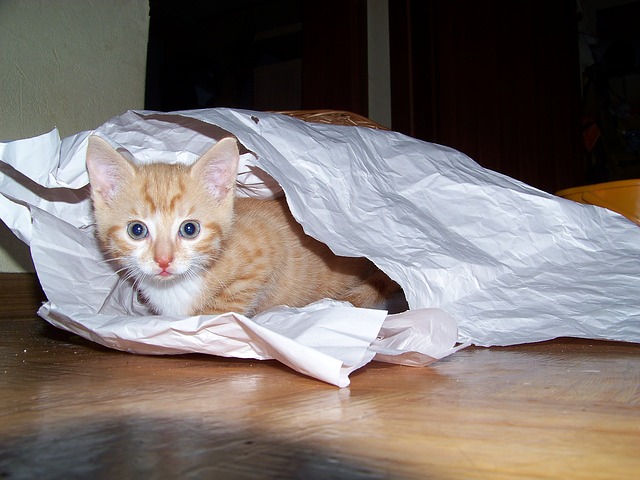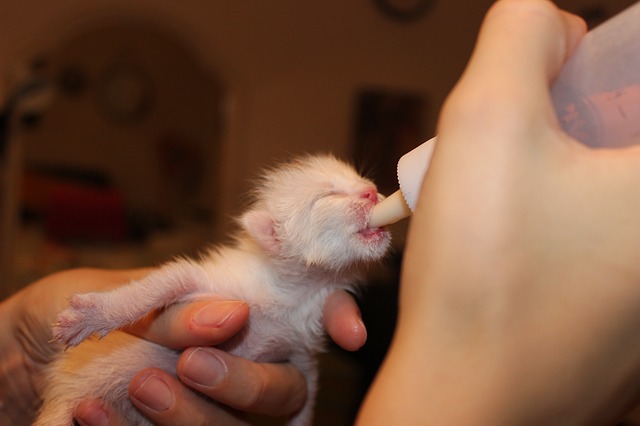11 Questions to Ask Before You Foster a Pet

Fostering a pet is one of the best ways to help reduce euthanasia rates in the United States. Marina Ascani, a 22-year-old Florida State University student, has been fostering animals since January 2018. She decided to start fostering because she wanted a dog for but thought she should test how it would work being a full-time student while working part-time. Over the past year she has fostered a few dogs, approximately 8 cats/kittens, and a litter of puppies.
After talking with Marina, it became apparent there are things everyone should consider before diving into the world of fostering. Here are 11 questions you should ask before you foster a pet!
1) What are the requirements?
While the requirements to foster will vary depending on the rescue or shelter you foster for, typically you must be 18 years of age or older and have a stable home environment. Marina says that of the 2 rescues and 2 shelters she has fostered from, “one place had a three-hour orientation to go to, but they all had a form of around 30 questions about your home, lifestyle, and other pets etc.” Remember that if you aren’t eligible to foster with one organization, you may be eligible to foster for another! Just find out the requirements from various organizations and figure out which one fits best with your lifestyle.
2) What are the costs?
For the most part, the rescue or shelter you foster for will provide everything your foster pet needs. This may include food, medication, a crate, a bed, and food/water bowls. They will also cover veterinary expenses. However, you may not get reimbursed for mileage driving your foster pet to/from vet visits and adoption events or extra toys you may want to give your foster pet. It can good idea to ask neighbors, friends, or colleagues if they have any spare supplies you can borrow while you foster to reduce the financial strain on the organization you are fostering for. You’ll also want to be prepared for the expenses of damage from your foster pet. Most of the time the pet you foster will not be accustomed to living in a home, so damage from chewing or potty accidents is to be expected.
3) Is your home puppy/kitty proofed?

Puppies and kittens are very curious and it’s not uncommon for them to get into trouble. In order to keep them safe and your personal belongings safe, you need to puppy and kitty proof your home! To do this, put away anything that is toxic or harmful. This includes electrical wires, sharp objects, house plants, people and animal food, medication, and anything that can be knocked off countertops or shelves. Don’t forget to close toilet and trash can lids, too! To minimize the damage of potty training accidents, put away valuable rugs. Lastly, make sure the foster pet is in a secure location when you leave them unattended.
4) Do you have other pets?
Having your own pets doesn’t prevent you from fostering animals. In fact, it can help your foster pet assimilated to living in a house and increase their adoptability. Marina fostered a 70lb dog, Nova, and in her house, she has “two dogs and two cats, and it took the dogs no time at all to get used to her, but the cats definitely took a couple of weeks.” However, if you have a pet that is not particularly friendly, consider how they would feel having new animals come in for random periods of time. You should go through with fostering only if you truly feel your pet wouldn’t become stressed out and wouldn’t cause harm to the other animal.
5) How do you safely introduce your pets to your new foster pet?
There are many ways to get pets accustomed to each other:
Dog to Dog: It’s always good to start by allowing dogs to meet outside first, then bring them in at the same time, avoiding the new dog intruding on the other’s territory. Keeping them on leashes while they sniff and check each other out is helpful, but some dogs have leash aggression. In this case, it is better to let the leash go (however do this in a controlled area like a fenced-in backyard or front yard) so both dogs are more comfortable.

Dog to Cat: If the home is originally a cat home, the best method is to begin with them separated by a gate. They’ll be able to meet through the gate while feeling safe on either side. Switching the rooms they are staying in will let the new dog become comfortable in all areas of the house, and soon they will get used to the idea of one another. Then, while keeping a leash on the dog, they can meet and possibly sniff each other. This process is much slower than introducing dogs because they are different species, but over time they’ll soon live in harmony and might even become friends.
Cat to Cat: Keeping the cats separate at first lets them smell the scent of the other without the intimidation of meeting immediately. By using a gate, they will feel comfortable seeing each other and you will be able to see their attitudes toward one another. If they seem normal, you can introduce them without a fence. If not, hold the course until they adjust.
Cat to Dog: Because it is the dog’s domain, be sure to keep them in separate rooms at first. One method to allow them to get used to each other is by feeding them at the same time on either side of the door. They will hear and smell each other while being paired with the positive experience of eating. After a few days, consider using a gate to let them look at each other so there are no surprises when they finally meet.
6) Do you have the time to foster?
Don’t foster animals if you don’t have the time. Just as normal pets need lots of love and attention, fosters do too. Also, you never know how long you’ll have your foster pet The time frame can range from a few days to a couple of years depending on how long it takes your foster pet to get adopted.
7) Are you prepared to potty train your foster pet?
Many foster pets have never been in a home environment before so the odds of them being housebroken are very low. For dogs, potty training takes consistency and hard work to prevent in-home accidents. Running a search on Google can help you find tips on how to be successful with potty training.
8) Are you prepared to handle medical needs?
Some foster animals have medical needs that you will need to monitor, take them to the vet for, and help treat. If the pet you’re fostering is a puppy or kitten without vaccines, you need to stay alert and watch for possible signs of illness. This is especially important when they haven’t been vaccinated yet because they are prone to picking up diseases at an early age.
9) Can you follow their feeding schedule?

Feeding your foster animal can get tricky if they have a certain feeding schedule to follow. Some animals will need medication with their food and some may need to be fed more often than you are home. If that is the case, have a friend of yours come by and feed them to keep them on track. Treats are always a good way to bond with your foster and teach them new tricks. As for water, always keep a fresh bowl of water within reach. However, if the puppy or kitten is very small, they can fall in and drown. The best way to avoid this is by keeping a few small bowls with a low amount of water around them.
10) Are you prepared to work for the highs?
Marina says “the most rewarding thing is watching a timid or shy dog break out of its shell and learn to love and trust you.” Many foster pets don’t know what it’s like to be loved or have a home and family, so getting to see them start to come out of their shell one of the best parts of fostering. These highs may take time to happen though, so be ready to be patient and work with your foster pet.
11) Are you prepared for the goodbye?
Inevitably, you will have to say goodbye to your foster pet when they get adopted. Fostering is only temporary (unless you become a “foster fail” and keep your foster pet), so you have to remember that going into it. Marina put it wonderfully, “as sad as it is when they get adopted, it’s also really great. Although you’re losing a part of your family and heart, you know they’re going to a really great forever family who truly wants them and is committed to them.”
Fostering animals has so many benefits and with the proper care, it can lead to a life-changing experience for you and your foster friend.
Have you ever fostered a pet before? What was the experience like? Leave a comment and let us know!
